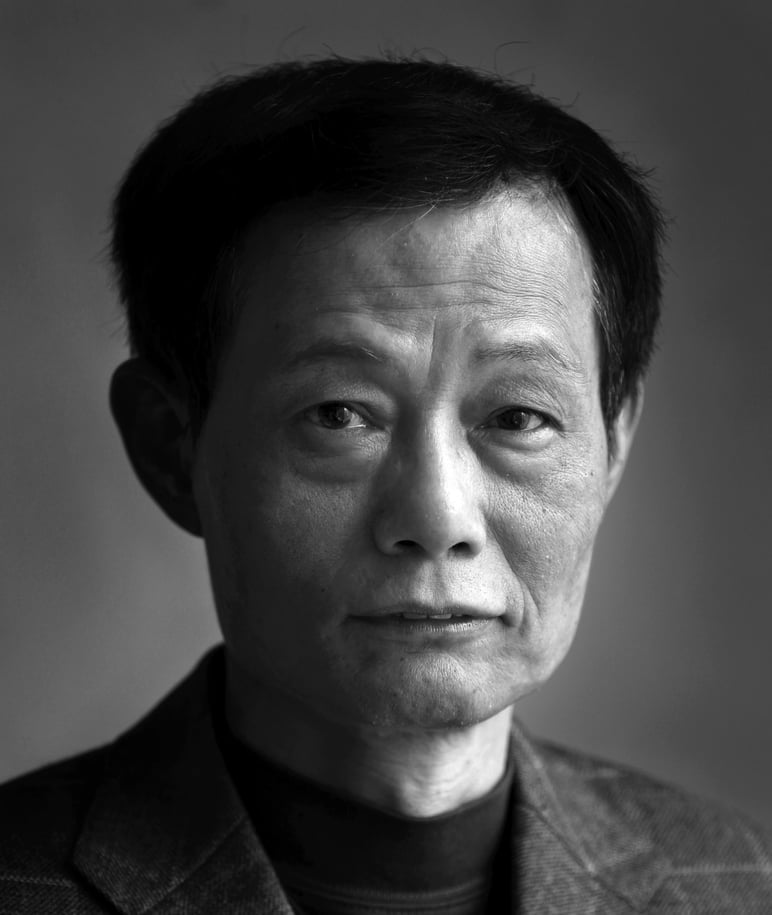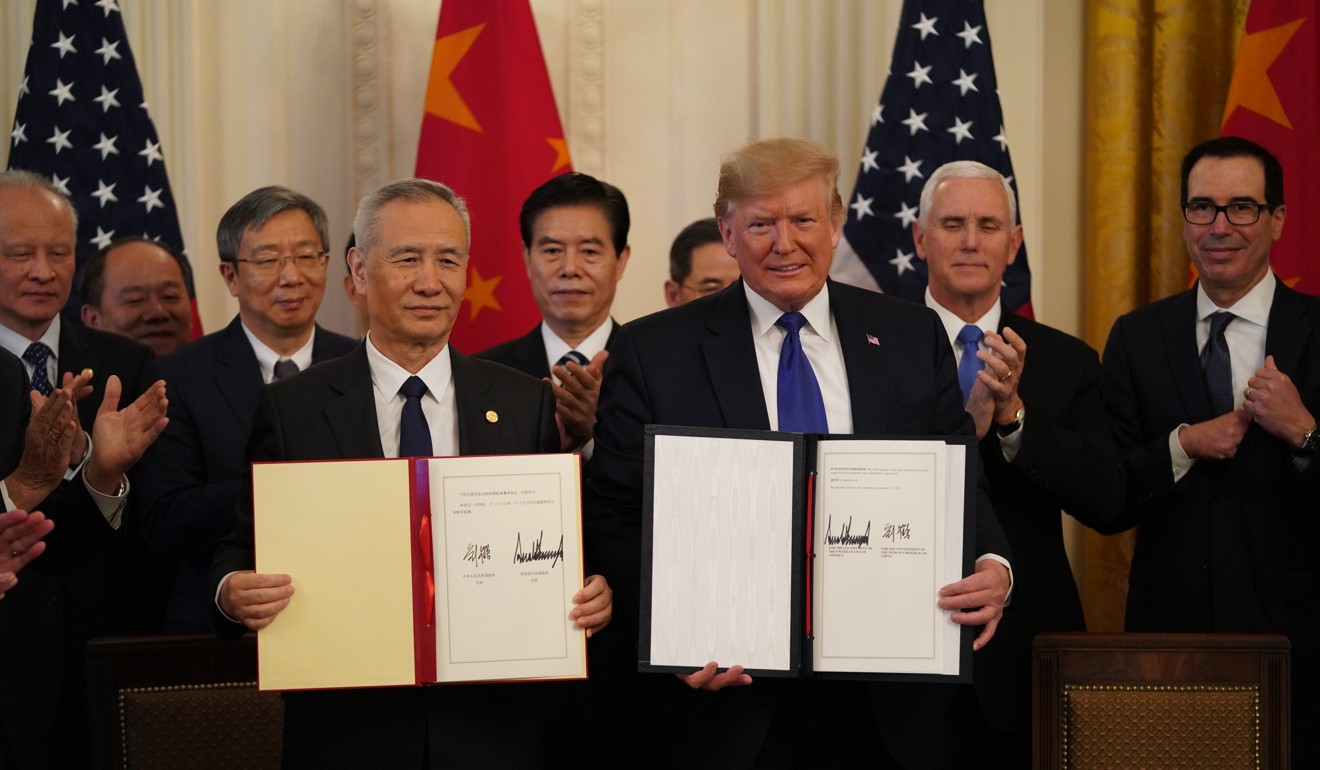
In the Year of the Rat, the US-China trade deal will not usher in a season of goodwill
- The interim accord has not completely prevented a full-blown trade war between the world’s two largest economies
- Nor does it address the rapid deterioration in Sino-US relations, amid their increasing divergence in geopolitics, strategic goals and ideologies
At this stage, both nations might shift the battleground from the negotiation table to on-site verification of the accord’s implementation. But it will be a challenge for this modest agreement to last, as the enforcement of each item contains a potential point for friction.
That is why the deal forestalls further escalation rather than scaling back punitive measures, as tariffs mostly remain in place as pre-emptive measures to ensure it is enforced.
How the US trade war brings out China’s best hopes and worst fears for its economy
Despite the deal, the Trump administration has kept its 25 per cent tariffs on US$250 billion of Chinese exports and 7.5 per cent tariffs on a further US$120 billion of exports. Clearly, with punitive tariffs still imposed on two-thirds of Chinese exports to the US, Washington wants to maintain an American stick hovering over Beijing should it not follow through with its compromises.
They also agreed on regular assessments, a Trade Framework Group meeting and the establishment of a bilateral conflict-resolution body. With remaining tariffs and possibilities of tariff snapbacks, trade-war related uncertainties will remain in the year ahead.

That is why Xi refused to sign the deal in person, but delegated it to vice-premier Liu He, despite Trump’s open invitation. Since the announcement of the deal on December 13, Trump asserted he and Xi would be signing the deal themselves.
Beijing has apparently been forced to accept the deal due to overwhelming fears of the damage an escalating tariff war might have on its trade-dependent economy, which saw its growth rate plunge to its lowest level in three decades last year. Beijing also sees managing China-US relations as the utmost goal of Chinese diplomacy. Xi cannot afford failures in both.
The US and China have a trade deal, but only Washington has what it wants
Indeed, the accord is a one-sided deal as it largely contains Beijing’s commitment to make changes. The 86-page document has 105 mentions of “China shall”, or in other words, “the 105 China must-do items”, while there are only five mentions of “the United States shall” and 27 mentions of “the United States affirms”.
Some analysts believe the deal might give Beijing time for structural economic adjustments. Its centrepiece is a Chinese commitment to buy an additional US$200 billion of US goods and services over the next two years, including US$77.7 billion worth of manufactured goods and US$32 billion of agricultural products, which would result in an increase of about 40 per cent in US exports to China, compared with the official statistics in 2019.

Questions remain over China’s ability to make an adjustment of such magnitude in such a short period. It will also be a challenge for the US to provide such great additional quantities of farm and energy produce for sale.
The irony is such Chinese goodwill commitments will also put American farmers in a vulnerable position, as the deal might leave their bottom lines at the mercy of Beijing. They also risk putting their products, such as soybeans, in one basket – to buy such vast quantities of US goods, Beijing will be forced to cut off business with other trade partners. This would violate international rules and potentially spur lawsuits before the World Trade Organisation.
Nor does the deal cover the intensifying technology war between the US and China. Just two days before it was signed, US Secretary of State Mike Pompeo lambasted China for cyber theft in a policy address to Silicon Valley grandees in San Francisco. In his speech, Pompeo also warned US industrialists to be prepared for a long-term technology war with the communist-ruled nation.
US-China decoupling would spell the end of globalisation and China’s growth story
The Trump administration has already imposed severe restrictions on technology supply chains that involve sales of semiconductors and other hi-tech components to China. US agencies – such as the departments of state, defence, commerce and energy – are stepping up their efforts to isolate some of China’s most competitive technology firms from the global supply chain. To date, more than 200 Chinese entities have been placed on a blacklist, including technology giant Huawei.
In response, Beijing has redoubled its determination to promote domestic champions by building their own supply chain in hi-tech industry, such as plans to increase domestic production of key components, especially semiconductors, from around 30 per cent now to 75 per cent by 2025.

As main military rivals and chief political adversaries, the antagonistic US stance towards China’s tech ambition will mean that their techno-political competition will intensify in the next decade. Trump’s real intention is to sever the US and China’s entangled supply chains. An efficient global supply chain will get decoupled as a result of the US-China technology war.
Trump and his top advisers acknowledged that the phase one deal leaves a lot to address with China in a proposed phase two agreement. His administration’s utmost accomplishments have been to change the way China’s economy functions and runs, from reducing the government’s role in economic activities to the elimination of state monopolies and shrinking state subsidies to industries. This will be difficult to realise, as Xi sees the state capitalism model as underpinning the party’s monopoly of power in the world’s last major communist nation.
The US and China beware: trade war tariffs are a double-edged sword
The deal does not address the rapid deterioration in overall Sino-US relations, amid their increasing divergence in geopolitics and strategic goals, and their widening disagreement in values, ideology and belief between the global leader of free democracies and the world’s most powerful authoritarian nation.
The risk that politics can disrupt trade and economic activities remains high so long as Washington wants to contain the rise of a communist power at all costs, and Beijing also wants to challenge the long US global leadership.
This is the first year of a new decade, and the Year of the Rat kicks off the 12-year zodiac cycle in the Chinese lunar calendar. But signing the interim trade deal at the beginning of the year will not usher in a new season of goodwill for the US-China relationship, as both powers are entering a new stage of competition and confrontation. ■
Cary Huang is a veteran China affairs columnist, having written on the topic since the early 1990s

